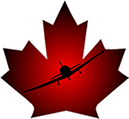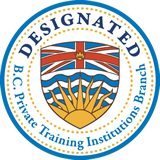 |
|
CROSS WIND HANDLING: TAKE OFF “There
are no secrets involved. It’s the same thing you Last time, we talked about taxiing and ground handling an aircraft in gusty and crosswind conditions. We discussed the aircraft’s natural tendency to weathercock and its eagerness, given any opportunity, to become airborne. We discussed some of the ground handling differences between conventional gear and tricycle gear aircraft and the basic geometry that produces those differences. This time, I’d like to talk a bit about taking off in gusty and crosswind conditions. If we can learn to safely taxi the aircraft out to the runway, it’s probably time to see about getting it into the air. Assuming we have safely made it to the runway, completed our run up and made the decision to aviate we must take into consideration both crosswind forces and any gust factors which will affect our take off. Most runways are designed to allow aircraft to take off and land into the aerodrome’s prevailing winds. Crosswind conditions tend to indicate an unusual situation, often accompanied by gusty conditions. Back in the bad-old-days, many aerodromes were simply large, open grass fields that allowed a pilot to choose the most convenient heading so take off or landing could be accomplished directly into the prevailing wind of the moment. These days, we must normally pick the runway that offers the best possible angle into the prevailing winds, minimising the crosswind component. At a controlled airport, particularly one with multiple runways, it may be an excellent plan to request the runway that best suits your needs, even if another runway is in use as the active. As PIC it is your responsibility to refuse a clearance if you feel it poses any hazard to the safety of your flight. At an uncontrolled airport, it will be your choice which runway to use. Check the winds carefully and use the runway that gives you a departure heading which minimises the crosswind component. Unless the runway is very narrow, we can hedge a bit by taking off at an angle to the centre-line to reduce some of the crosswind component. You can position your aircraft on the downwind corner of the runway and aim toward the upwind corner at the other end, or an appropriate point down the runway that will give you the required distance. No one ever said you had to take-off down the centreline. You only need to take-off straight. As we manoeuvre on to the active runway, as a result of crosswinds, we may be bringing the wind across either our nose or tail as we align our aircraft with the runway. Correct elevator and aileron inputs are very important: turn into the wind; dive away. If you are flying a conventional gear aircraft remember to maintain an elevator position that will assist in keeping the tail wheel firmly on the ground to assist steering. With the wind ahead, up elevator is required. When the wind is behind, down elevator. Restrain any urges to give sudden bursts of power, particularly with the elevator in the down position and a strong or gusty wind. You may lift the tail and lose control of the aircraft. Visual reference on the runway is always important and even more so in gusty crosswinds. Make use of available, clearly identifiable landmarks, a tree or a building at the far end of the runway, for example. Having identified a reference point at ground level, we need to find an easily identifiable, visual reference above the runway on our departure path, as well. Once the nose lifts and we lose sight of the runway, we need to maintain orientation. Because of the crosswind, we will not be able to align the longitudinal axis of the aircraft with that of the runway once we are airborne. This makes our visual reference even more important. Even though our departure heading will not coincide with runway heading, our ground track must still be runway heading. Without easily identifiable, visual references, it will be extremely difficult to monitor our track over the ground once our wheels leave the ground. Before we get things moving, it isn’t a bad concept at all to remind ourselves of the host of forces we unleash as we add power and accelerate down the runway. I suppose it’s the teacher in me, but I always feel it’s good to know and understand what we will be dealing with so our decisions and actions can be based on knowledge rather than on hope. The vertical fin of our aircraft, as well as its weather side, will act to turn the aircraft toward the relative wind as soon as there is any. This includes the wind acting on the aircraft before the machine is in motion. As the relative wind—the wind produced by the combination of the aircraft’s motion and the ambient wind—increases, the turning force applied by the fin and the side of the aircraft increase, as well. Unless controlled, our aircraft will naturally turn toward its relative wind. The prop wash, as well, factors into our relative wind. The clockwise rotating propeller sends its wash aft to strike the left side of the vertical fin, producing, as the float drivers call say, a left-turning tendency. If the crosswind is coming from the left side, its force is multiplied by the aircraft’s natural tendency to yaw to the left. As we apply power, the force of torque begins to appear. Newton’s third law of motion reminds us that for every action there is an equal and opposite reaction. The prop and engine turn in a clockwise direction, as seen from the pilot’s seat, which acts to roll the aircraft in an anti-clockwise direction, as seen from the pilot’s seat, unless, of course, you are flying a British or Russian built aircraft. Torque produces roll; roll results in yaw. Torque also adds to our left-turning tendency. Asymmetric thrust, the differential between the thrust produced by the up-going and down-going propeller blades as soon as the longitudinal axis of the aircraft leaves horizontal can present another challenge, adding to our left-turning tendency, as well. As we lift the nose of our aircraft, the down-going blade meets the air at a higher angle of attack than the up-going blade and produces a turning force toward the left. The so-called “P” factor is another force we must contend with, particularly for those flying conventional gear aircraft. As we lift the tail we change the plane of rotation of the propeller by, effectively, applying a forward force at the top and aft side of the propeller’s arc. A force applied to a gyroscopic body—our prop is acting as a gyroscope—results in that force translating to a force in the same direction but 90 degrees in the direction of the rotation. You can imagine a
push on the propeller at its horizontal extremity on the right side, a
force that wants to turn the aircraft, again, to the left. The intensity
of this force is in direct proportion to how quickly we bring the tail
up. The critical point in a crosswind take-off occurs at the moment of lift off. In a normal take-off we generally allow the aircraft to lift itself off the ground, gradually transferring the load of the machine from wheels to wings. In a crosswind take-off, this procedure would be very dangerous. In a crosswind take-off, particularly if accompanied by gusts, we want the aircraft to transition from being firmly on the ground to flying as quickly as possible. On the ground we can assert control with the help of the landing gear. In the air we can assert control with aileron, rudder and elevator. We want to avoid allowing the aircraft becoming light on its wheels while still on the ground where all our turning tendencies may take over in spite of our best efforts. Particularly in gusty conditions, it is critical to go from not flying to flying as seamlessly as possible. The recommended crosswind take-off technique is to hold the aircraft on the ground a bit longer than we normally would, building up a bit of extra flying speed, so lift off will be positive and complete. We maintain directional control while on the ground with rudder and rubber. In a light aircraft, for example, if our normal rotation speed is 55 MPH we might hold the aircraft on the ground until we reach 70 MPH then briskly pull the aircraft into the air. With tricycle gear aircraft, a very slight forward pressure on the yoke will help keep the nose wheel firmly on the ground until we are ready to lift off. Too much pressure or holding the aircraft on the ground too long can result in wheelbarrowing, so be alert for any signs of the tail lifting, as well. For conventional gear aircraft, we want, initially, to keep that tail wheel on the ground to assist in steering until we have sufficient speed for the rudder to become effective. We are then looking for a slightly more tail high attitude than we might normally use, maintaining a low angle of attack to prevent the aircraft from lifting off before we are ready to fly. Directional control will be somewhat easier with the wind coming from the right side since we will have torque, prop wash, P-factor and asymmetric thrust components on our side. We are looking for a brisk and positive lift off followed by a co-ordinated turn position the aircraft at the correct angle into the wind. We compensate with crab for deflection from our ground track and climb out at a slightly higher speed than normal, particularly in gusty conditions to maintain a good margin between flight and slow flight or stall. As long as we respect and remain will within the limits of the aircraft we are flying and our own limits, the procedure for dealing with crosswind take-offs, even in gusty conditions, isn’t too difficult to master. Once again, start where you are. Build your skills and knowledge at your own pace. Seek help if in doubt, and enjoy expanding your range and competency. |



